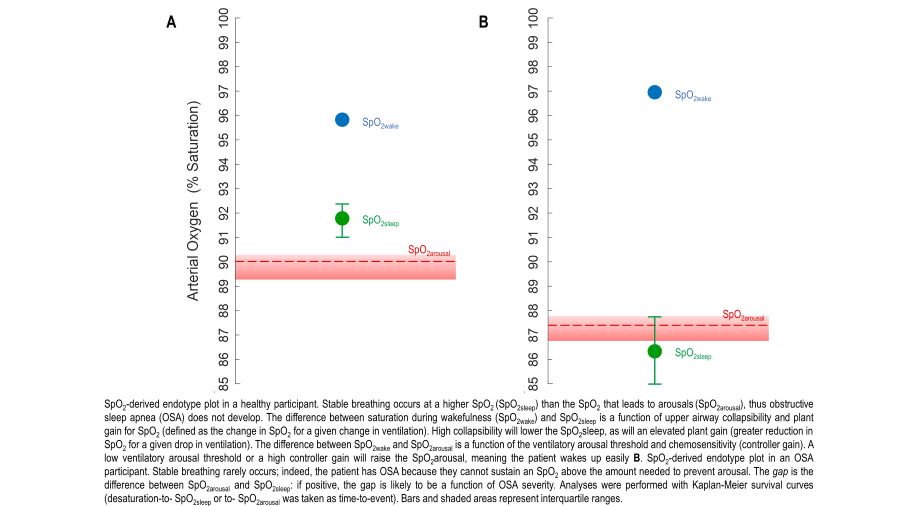Abstract
Background: Oximetry is a valuable tool with a wealth of information that can simplify the diagnosis of obstructive sleep apnea (OSA) and support treatment decisions. Here we present preliminary data for a novel approach for determining OSA endotypes through analysis of the oxygen saturation (SpO2) signal.
Methods: 3 SpO2 were determined: the steady-state SpO2 during wakefulness (SpO2wake), the steady-state SpO2 that can be achieved during sleep (SpO2sleep), and the SpO2 leading to an arousal from sleep (SpO2arousal). The SpO2arousal-SpO2sleep difference is the gap that needs to be overcome to solve OSA. We conducted a window-by-window (5m) analysis of the oximetry trace in 4 polysomnograms thus far. SpO2wake was calculated as the average SpO2 in awake windows. SpO2arousal was determined as the average of desaturation nadirs, provided there was at least one ?3% desaturation in the window. SpO2sleep was defined as SpO2 average in a window where no desaturation occurred. Kaplan-Meier survival curves were used to determine median[IQR] SpO2sleep and SpO2arousal, which informed the endotype plot (Figure1).
Results: The gap was associated with the apnea-hypopnea index (R2=0.98) and the oxygen desaturation index (R2=0.97). The SpO2-derived endotype analysis also provided visual information on potential ways to solve the gap.
Conclusions: SpO2-based endotype detection may inform clinical decisions and guide therapy response prediction.
